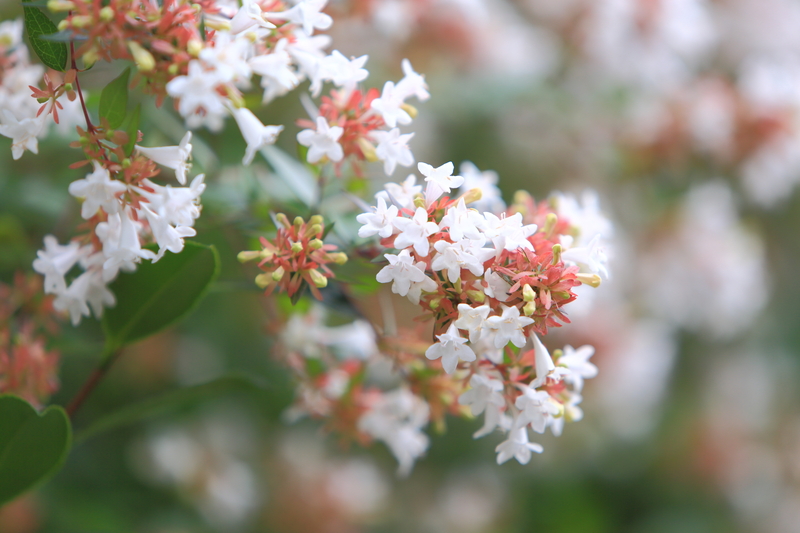Winter Armor: How to Keep Your Garden Plants Safe
Posted on 13/09/2025
Winter Armor: How to Keep Your Garden Plants Safe
As the days grow shorter and temperatures begin to plummet, every gardener faces the annual challenge: protecting their beloved garden plants from winter's freezing grip. Whether you're nurturing a vibrant perennial plot, tender vegetables, or prized shrubs, winter can pose serious risks. Thankfully, with the right winter protection strategies and a proactive approach, you can ensure your cherished plants not only survive but thrive come spring. This comprehensive guide explores everything you need to know about creating a winter armor for your garden.
Why Do Garden Plants Need Winter Protection?
Winter brings a slew of challenges--frigid temperatures, frost, harsh winds, heavy snow, and even sudden thaws. All of these can wreak havoc on unprotected plants. But why is winter so tough on our green friends?
- Freezing Temperatures: Extreme cold can cause frostbite, cellular damage, and root kill.
- Fluctuating Heat: Sudden thaws and refreezes can disrupt dormant cycles and injure plant tissues.
- Dehydration: Winter winds steal moisture, leading to desiccation or "winter burn."
- Heavy Snow: Snow weight can break stems, branches, or flatten low-growing plants.
- Soil Heaving: Freeze-thaw cycles can push plant roots to the surface, exposing them to the cold.
Understanding these dangers is the first step in crafting a reliable winter armor for your plants.

Assess Your Garden: What Needs Protection?
Not all plants are equally susceptible to winter's fury. Identifying the most vulnerable species in your garden is crucial for efficient, targeted protection:
- Newly planted shrubs and trees
- Young or tender perennials
- Warm-climate species grown in colder zones
- Bulbs and tubers near the soil's surface
- Container plants and raised bed crops
- Evergreens prone to winter burn
Consider your local climate, plant hardiness zones, microclimates within your landscape, and individual plant histories. Are there wind tunnels? Shady spots? Plots exposed to winter sun? These factors will influence your winter gardening strategy.
Timing Is Everything: When to Prepare Your Winter Armor
Timing plays a vital role in successful plant protection:
- Early fall: Mulch and water deeply before the first hard frost.
- Late autumn: Install physical barriers, covers, and wraps once temperatures are consistently cool, but before the ground freezes solid.
- During winter: Monitor for extreme weather events and make adjustments as needed.
Delaying preparation can be costly, so create a simple checklist and set reminders for key garden tasks.
Essential Strategies for Winter Proofing Your Garden Plants
1. Mulching: Your Plant's Cozy Blanket
Mulching is one of the most effective--and often overlooked--ways to provide winter protection for plants:
- Retains Soil Moisture: Prevents roots from drying out during thaw cycles.
- Insulates Roots: A thick mulch layer keeps the ground temperature stable and prevents freeze/thaw heaving.
- Natural Barrier: Shields against snow and wind erosion.
What mulch should you use? Try organic options such as shredded leaves, straw, pine needles, compost, or bark chips. Apply 2-6 inches, avoiding direct contact with plant stems. For roses or tender perennials, mound extra mulch around the base for added protection.
2. Watering Wisely: Hydrate Before Winter
Moist soil is better at storing heat and helping plants withstand freezing conditions. Deeply watering your garden before the onset of winter (especially for evergreens and trees) gives your plants a major advantage. But avoid water-logging; good drainage matters too.
3. Windbreaks and Barriers: Shielding from the Gales
Winter winds can sap moisture from leaves and branches. To prevent winter scorch and desiccation:
- Drive in stakes and attach burlap, landscape fabric, or wind netting around sensitive plants.
- Align windbreaks on the northwest side, which is where most cold winds originate in many regions.
- For small trees or shrubs, create A-frame supports to catch snow and reduce breakage.
- Group container plants together or move them into protected corners.
4. Cloches, Row Covers, and Frost Blankets
For tender annuals and vegetables, frost cloths and easy-to-install row covers provide a breathable, insulated dome. Cloches (bell-shaped glass or plastic covers) offer localized warmth for individual plants. Secure edges with soil, rocks, or pins so winds can't whisk them away.
5. Wrapping Trees: Guard Against Sunscald and Frost Cracks
Young and thin-barked trees are prone to sunscald: sunny winter days warm the bark, followed by rapid temperature drops at sunset, which leads to cracking. Combat this with:
- White tree wrap or spiral guards (these reflect sunlight and stabilize bark temperature)
- Hardware cloth collars to protect from rodents
- Mulch rings to insulate root zones
6. Pruning with Purpose: Less Is More
Resist the urge for a severe fall haircut! Heavy fall pruning encourages new growth, which will likely die back in winter. Instead:
- Remove weak, dead, or diseased branches only
- Wait until late winter or early spring for more extensive pruning
7. Protecting Container Plants from Cold
Plants in pots are at greater risk--their root systems are exposed to extremes. Here's how to create effective winter plant protection for containers:
- Group together or bury pots up to the rims in soil, straw, or leaves
- Move to unheated garages, sheds, or against sheltered house walls
- Wrap pots with bubble wrap, burlap, or insulation
8. Snow Management: Helpful or Harmful?
While snow acts as a natural insulator, heavy snow or ice can damage branches by bending or breaking them. Gently brush off excess accumulation with a broom, but avoid shaking frozen limbs, which can easily snap. Allow a light snow layer to cover soil and beds--it actually helps preserve warmth.
Specialty Tips for Unique Plants
Protecting Evergreens in Winter
- Water well into late fall as evergreens continue to lose moisture throughout winter
- Apply anti-desiccant sprays (wilt-proof products) according to manufacturer instructions
- Use burlap screens to break wind and sun glare
How to Overwinter Roses
- Cut canes to 18-24 inches
- Mound 8-12 inches of mulch or compost over the base
- For grafted types, protect the graft union with extra insulation
Bedding Bulbs and Perennials
- Wait until the first frost to cut back foliage
- Apply a 3-6 inch mulch blanket
- Consider a wire mesh cage for extra pest protection
Vegetable Gardens and Raised Beds
- Plant winter-hardy greens under low tunnels or cold frames
- Layer beds with mulch or cover crops to protect soil structure
- Clean debris to prevent overwintering pests and diseases
Common Winter Protection Mistakes--and How to Avoid Them
Avoid these classic errors to give your garden plants the best winter armor possible:
- Applying mulch too early: Wait until after the first freeze to discourage rodents and prevent rot.
- Using plastic sheeting directly: Plastic can trap moisture and suffocate plants. Always use breathable fabric.
- Overwatering or poor drainage: Soggy soil in freezing weather can lead to root rot; ensure pots and beds drain freely.
- Neglecting labels: Always double-check plant hardiness and tailor your protection accordingly.
- Ignoring late winter thaws: Warm spells can lure plants out of dormancy--be ready to add or remove covers as needed.
Sustainable and Eco-Friendly Winter Protection Ideas
Protecting your garden for the cold season doesn't have to be wasteful or costly. Here are some green-minded approaches to build your winter armor:
- Use leaves, grass clippings, and yard trimmings for natural mulch.
- Repurpose old blankets, sheets, or burlap bags as covers.
- Build windbreaks from reusable pallets or bamboo stakes.
- Save bubble wrap from packaging to insulate pots.
- Compost spent plant material after spring cleanup.

Winter Plant Protection FAQs
How often should I check my plant covers during winter?
Inspect covers and windbreaks after storms or thaws. Re-secure dislodged materials and watch for signs of trapped moisture or overwintering pests.
When should I remove winter mulch and barriers?
Start loosening and gradually removing mulch and covers as soon as soil thaws and danger of deep freeze passes, but don't be too eager--late frosts remain a threat.
Are there plants I should bring indoors for winter?
Tropical and tender container plants, including many herbs (like basil), succulents, or annuals not adapted to cold, should be brought indoors before frost strikes.
Conclusion: Build Your Winter Armor and Reap the Rewards
Winter plant protection is both an art and a science. By anticipating weather, understanding your unique garden landscape, and employing proven winter armor techniques, you'll safeguard your plants against the harshest months. Each layer of straw, each staked wrap, and each inch of mulch contributes to a healthier, more resilient landscape ready to burst into color in spring. Remember: vigilance is key. Spend a few extra hours now, and your blooming beds and fruiting shrubs will thank you for seasons to come.
For more tips on advanced winter gardening and plant protection, subscribe to our newsletter, and never miss a seasonal garden guide!

